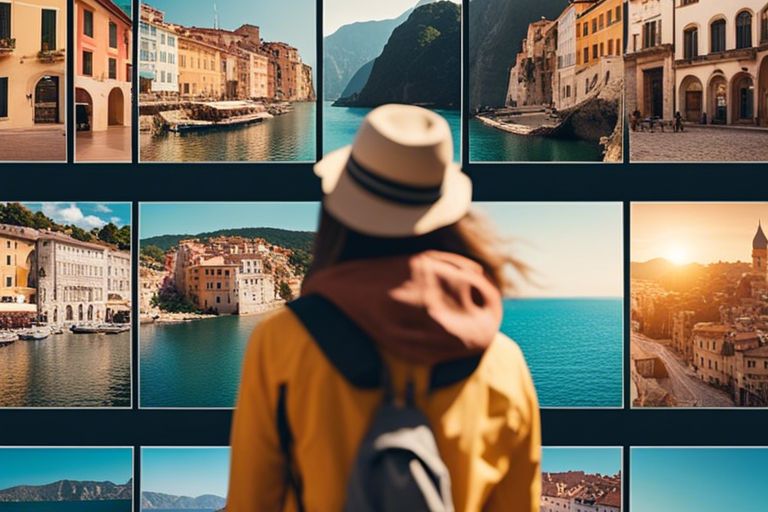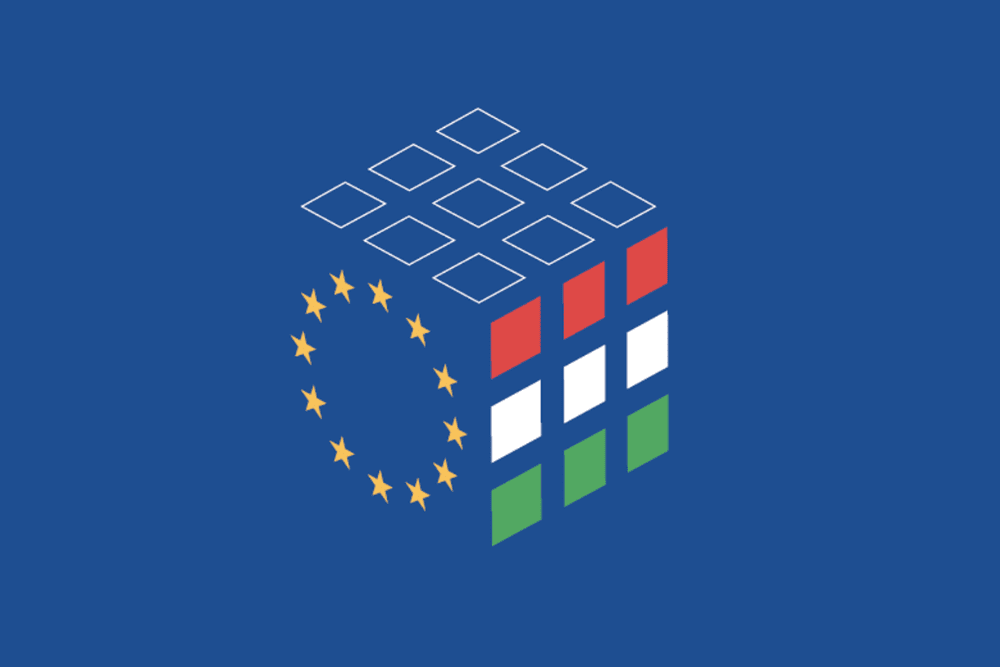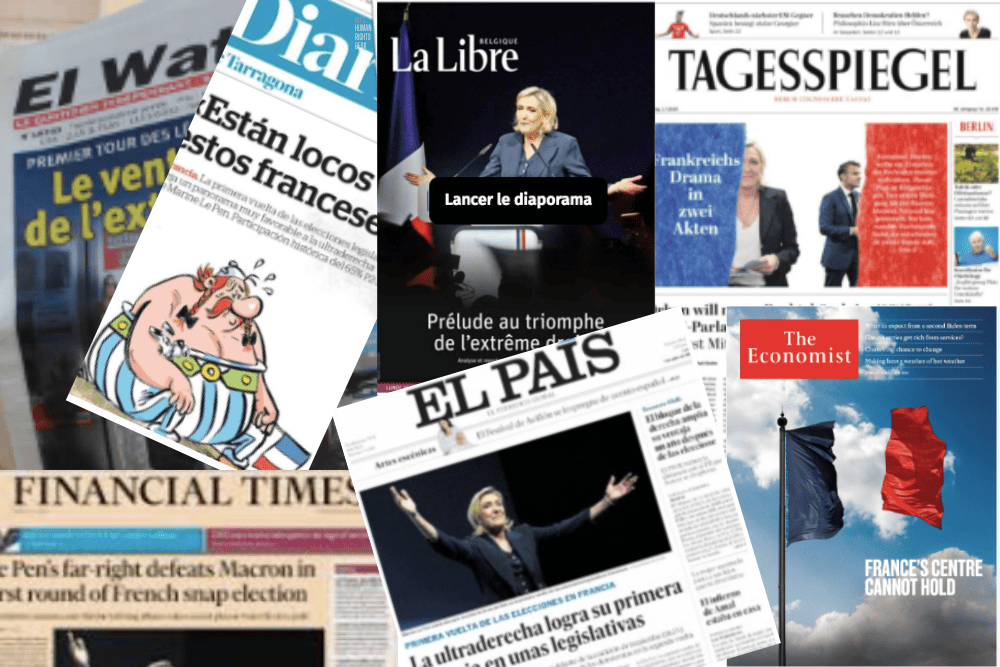With summer just around the corner, it’s time to commence on an adventure of a lifetime – backpacking through Europe. From the historic streets of Rome to the picturesque canals of Venice, this continent is full of wonders waiting to be explored. In this ultimate guide, you will discover top destinations, budget tips, safety precautions, and cultural insights to make your journey through Europe an unforgettable experience. So pack your bags, lace up your hiking boots, and get ready to hit the road!
Pre-Trip Planning
While planning your backpacking adventure through Europe, it’s imperative to do your research. Make sure to check out resources like Backpacking through Europe: all you need to know to gather valuable tips and insights. Understanding the ins and outs of backpacking will help you make informed decisions and ensure a smooth journey.
Choosing Your Route
For many backpackers, Europe offers an array of options when it comes to planning your route. Are you drawn to the historic charm of cities like Paris and Rome, or do you crave the natural beauty of the Swiss Alps and the Mediterranean coast? Consider your interests and preferences when mapping out your itinerary. Recall, flexibility is key when backpacking – unexpected discoveries often make the best memories.
Setting a Budget
With Europe’s diverse range of countries and currencies, it’s important to set a realistic budget for your trip. Consider factors like transportation, accommodation, food, activities, and unexpected expenses. Research the cost of living in each destination and factor in any splurges you may want to indulge in. Recall, sticking to a budget doesn’t mean missing out on experiences – it’s about finding a balance that allows you to make the most of your journey.
Plus, keep in mind that Europe can be more expensive than other backpacking destinations, but there are plenty of ways to save money. Look for budget accommodation options like hostels or homestays, take advantage of local markets for affordable meals, and opt for walking or cycling to explore cities and towns. By setting a budget and being mindful of your spending, you can enjoy a fulfilling backpacking experience without breaking the bank.
Packing Essentials
Some of the most critical aspects of preparing for your backpacking adventure through Europe are the crucials you pack. Making sure you have the right gear, clothing, footwear, toiletries, and personal care items will make your journey much more comfortable and enjoyable.
Backpacking Gear
With proper backpacking gear, you can ensure that you are well-prepared for the journey ahead. Make sure you have a lightweight, durable backpack that fits comfortably and has enough room to hold all your crucials. Invest in a quality sleeping bag and a compact tent if you plan on camping along the way. A good pair of hiking boots, a headlamp, a multi-tool, and a water bottle are also crucial items to have in your backpack.
Clothing and Footwear
The clothing and footwear you pack can make a huge difference in your comfort while backpacking through Europe. Choose lightweight, moisture-wicking clothing that can easily be layered for changing weather conditions. Pack a few pairs of quick-drying socks and underwear, as well as a waterproof jacket and sturdy hiking pants. Comfortable walking shoes or hiking boots are a must, as you’ll likely be doing a lot of exploring on foot.
The key to packing clothing and footwear for your European adventure is versatility. Choose items that can be mixed and matched easily, so you can create different outfits without packing too much.
Toiletries and Personal Care
In terms of toiletries and personal care items, **packing light is crucial**. Opt for travel-sized bottles of shampoo, conditioner, body wash, and a compact travel towel to save space in your backpack. Don’t forget crucials like a toothbrush, toothpaste, sunscreen, and lip balm. A small first aid kit with basics like band-aids, pain relievers, and any necessary medications is also important to have on hand.
To **stay fresh and clean on the go**, consider packing some wet wipes, hand sanitizer, and deodorant. These items can be real lifesavers, especially when you’re traveling long distances without access to a shower.
Travel Documents
For your backpacking trip through Europe this summer, it is crucial to make sure you have all the necessary travel documents in order. From passports and visas to travel insurance and health requirements, here is everything you need to know to have a smooth and hassle-free journey.
Passports and Visas
Passports are the most necessary travel document you will need for your European adventure. Make sure your passport is valid for at least six months beyond your planned stay to avoid any issues at border control. Additionally, check if you need a visa for the countries you plan to visit. Some European countries require a visa for entry, so it’s important to research and apply for one in advance if needed.
Keep copies of your passport and visa in a separate place from the originals while traveling. In case your documents get lost or stolen, having copies will expedite the process of getting replacements. Remember to also register your trip with your embassy or consulate before you depart, so they can assist you in case of an emergency.
Ensure that you have all the necessary travel documents ready and easily accessible during your journey. Having your passports and visas organized and secure will give you peace of mind and allow you to focus on enjoying your backpacking experience through Europe.
Travel Insurance
One of the most important travel documents you should have for your backpacking trip through Europe is travel insurance. Travel insurance provides protection against unexpected events such as trip cancellations, medical emergencies, and lost or stolen belongings. It gives you peace of mind knowing that you are financially covered in case of any unforeseen circumstances during your travels.
This necessary document can cover medical expenses abroad, emergency evacuation, trip cancellations, and even lost baggage. Before purchasing travel insurance, make sure to read the policy details carefully and understand what is covered. It’s better to be safe than sorry, so invest in a comprehensive travel insurance plan that suits your needs and travel itinerary.
This summer, as you backpack through Europe, remember that having travel insurance is not just a luxury but a necessity. It may seem like an additional cost, but the protection and security it provides far outweigh the expense. So, before you commence on your journey, make sure to get the right travel insurance coverage to safeguard yourself against any unforeseen events.
Health and Vaccination Requirements
When considering health and vaccination requirements for your European backpacking trip, it’s necessary to stay informed and prepared. While most European countries do not have specific vaccination requirements, it’s recommended to be up to date on routine vaccines before traveling. Additionally, it’s a good idea to check with your healthcare provider to see if there are any recommended vaccines based on your travel destinations.
As you explore Europe this summer, be mindful of food and water safety to prevent any gastrointestinal issues. Carry medications for common travel ailments like motion sickness, allergies, or pain relief. In case of any medical emergencies, make sure you have your health insurance information handy for quick access to medical care.
Recall, your health and well-being are a top priority while backpacking through Europe. Stay hydrated, eat healthy, get enough rest, and be cautious of your surroundings. By taking care of your health and following basic hygiene practices, you can have a fulfilling and enjoyable backpacking experience across the beautiful continent of Europe.
Transportation
Flights and Trains
Your journey through Europe can be made seamless with a combination of flights and trains. **Flights** are a quick and convenient way to cover long distances between countries. Look out for budget airlines like Ryanair or EasyJet for affordable fares. Book in advance to snag the best deals and be flexible with your travel dates to save even more money.
**Trains** in Europe are known for their efficiency and scenic routes. The extensive rail network connects major cities and picturesque towns, offering a comfortable and eco-friendly travel option. Consider getting a Eurail pass for unlimited train travel within a certain period, allowing you the flexibility to explore multiple destinations without the hassle of booking individual tickets.
For the ultimate European adventure, mix and match flights and trains to create a diverse itinerary that suits your travel style. Embrace the convenience of flying between distant cities and enjoy leisurely train rides through the captivating countryside.
Bus and Ferry Options
An alternative to flying and taking trains is exploring Europe’s **bus and ferry options**. Buses are a cost-effective way to travel within a country or even between countries. Companies like FlixBus offer comfortable coaches with onboard amenities, making long journeys more bearable. Ferries are ideal for island hopping or crossing bodies of water, providing a scenic and relaxing mode of transportation.
**An** advantage of buses and ferries is the opportunity to see more of the countryside and off-the-beaten-path destinations that might not be easily accessible by other means. Embrace the slower pace of travel and soak in the beauty of Europe’s landscapes as you make your way from one destination to the next.
Renting a Car or Campervan
To truly experience the freedom of traveling through Europe, consider **renting a car or campervan**. Having your own wheels allows you to explore remote areas, scenic routes, and charming villages at your own pace. Driving through Europe offers a sense of independence and adventure, giving you the flexibility to deviate from the typical tourist path.
**To** make the most of your road trip, plan ahead and familiarize yourself with driving regulations in each country you visit. Keep in mind that some cities have restricted driving zones and parking can be challenging, so research parking options in advance. With a car or campervan, you can create a personalized itinerary and stop wherever catches your eye along the way.
Accommodation
After Backpacking Europe: the ultimate guide, it’s time to look into finding the perfect accommodation for your adventure. Whether you prefer a cozy hostel, a trendy Airbnb, or a scenic campsite, Europe offers a wide range of options to suit every traveler’s taste and budget.
Hostels and Budget Hotels
Budget travelers will find hostels and budget hotels to be their best friends while backpacking through Europe. Hostels are not only affordable but also provide a great opportunity to meet fellow travelers and exchange stories and tips. With shared dormitories or private rooms, you can choose the level of privacy and social interaction that suits you best. Additionally, budget hotels offer basic amenities at a fraction of the cost of luxury accommodations, perfect for those looking to save money for other adventures.
Hostels and budget hotels are scattered throughout Europe, from bustling cities to picturesque countryside villages. You can book in advance through websites like Hostelworld or Booking.com to secure your stay and have peace of mind knowing you have a comfortable place to rest after a day of exploring.
Don’t underestimate the charm and convenience of hostels and budget hotels. Embrace the communal atmosphere, take advantage of the hostel events and tours, and make new friends from around the world. These accommodations are not just a place to sleep but an integral part of your backpacking experience.
Camping and Glamping
The more adventurous travelers may opt for camping and glamping options when backpacking through Europe. Camping allows you to immerse yourself in nature, whether it’s in the rugged mountains of the Alps or along the stunning coastline of the Mediterranean. On the other hand, glamping offers a luxurious camping experience with amenities like comfortable beds, electricity, and sometimes even hot tubs.
For instance, camping in Europe can range from wild camping in remote areas to designated campsites with facilities like showers and toilets. Glamping, on the other hand, provides a more upscale experience with unique accommodations like yurts, treehouses, or even renovated vintage caravans. Whichever option you choose, camping and glamping allow you to disconnect from the hustle and bustle of city life and reconnect with nature.
Airbnb and Vacation Rentals
To add a touch of homeliness to your backpacking journey, consider staying in an Airbnb or vacation rental. These options provide a more personalized and intimate experience compared to traditional hotels. You can choose from a variety of accommodations, from cozy apartments in the heart of the city to charming cottages in the countryside.
Airbnb and vacation rentals offer the freedom to create your own schedule, cook your own meals, and live like a local during your travels. Additionally, interacting with the hosts can give you insider tips on the best places to visit, eat, and explore in the area. It’s a fantastic way to experience Europe through the eyes of a resident.
Camping under the stars, cozying up in a hostel dorm, or living like a local in an Airbnb – the choice is yours when it comes to accommodation options for your backpacking adventure through Europe. Each option offers a unique experience that will enhance your journey and create lasting memories. So, pick the accommodation that suits your style and get ready for an unforgettable trip!
Itinerary Planning
Now, when you are planning your backpacking trip through Europe, one of the most crucial aspects is creating a daily schedule. It may be tempting to leave things spontaneous, but having a rough itinerary can help you make the most of your time.
Creating a Daily Schedule
Any experienced traveler will tell you that balancing sightseeing, travel time, and relaxation is key. Start by researching the cities you will visit and list down the must-see attractions in each place. Consider factors like opening hours, entrance fees, and proximity to one another when planning your daily activities. Remember to factor in time for meals, breaks, and unexpected discoveries along the way.
Must-See Attractions and Landmarks
Daily exploring Europe means immersing yourself in a blend of history, culture, and breathtaking landscapes. From the Eiffel Tower in Paris to the Colosseum in Rome, each city has its iconic landmarks that you simply cannot miss. **Ensure** you allocate enough time to visit these famous sites, take in their beauty, and learn about their significance. Make sure to prioritize your must-see attractions while also allowing room for spontaneous adventures and local experiences.
It’s crucial to **note** that some attractions may require advance booking or have specific visiting hours. It is advisable to check online or at local tourist information centers for updated information and any special events happening during your visit. **You don’t** want to miss out on seeing a renowned masterpiece or historical site due to lack of planning. It’s also a good idea to invest in city passes or attraction tickets in advance to save time queuing up and to avail of any discounts available.
Off-the-Beaten-Path Destinations
For a truly memorable backpacking experience, consider adding off-the-beaten-path destinations to your itinerary. **These hidden** gems away from the usual tourist trails can offer a more authentic and intimate look at European culture. Explore charming villages, lesser-known museums, and scenic countryside routes that provide a glimpse into the local way of life. **Venturing** off the beaten path allows you to escape the crowds, connect with nature, and create unique memories that will last a lifetime.
Plus, these hidden **treasures** often come with the added bonus of being budget-friendly and less crowded than popular tourist hotspots. Embrace the spirit of adventure and wander off to discover quaint cafes, hidden viewpoints, and secret spots that are not found in guidebooks. **You never** know what hidden surprises await you off the beaten path in Europe.
Safety and Security
Many Backpacking Europe: The Ultimate Travel Guide articles mention the importance of safety and security while traveling. It’s crucial to stay vigilant and take necessary precautions to ensure a smooth and enjoyable backpacking experience through Europe.
General Safety Tips
Safety should always be your top priority when backpacking through Europe. Carry a money belt to keep your cash, cards, and passport safe. Keep a copy of important documents in a separate place, and lock up your valuables in hostels. Stay aware of your surroundings, especially in busy tourist areas, and avoid flashing valuables like expensive cameras or jewelry.
- Avoid walking alone at night in unfamiliar areas.
- Trust your instincts and avoid situations or people that make you feel uneasy.
- Research common scams in the countries you’re visiting to stay one step ahead of scammers.
Assume that not everyone has good intentions, and always prioritize your safety and well-being during your travels.
Dealing with Scams and Theft
Theft can happen in any part of the world, and Europe is no exception. Stay alert in crowded areas such as markets, public transportation, and popular tourist spots. Keep your belongings close to your body, and be cautious of distractions or overly friendly strangers.
To avoid pickpocketing, consider using a money belt under your clothes and separate your valuables in different pockets. If you do encounter a scam or theft, report it to the local authorities and your embassy for assistance.
Staying Healthy on the Road
Staying healthy while backpacking through Europe is necessary to fully enjoy your adventure. Drink plenty of water, especially during hot summer months, and pack a first-aid kit with necessary medications and supplies.
Sleep in clean accommodations, and practice good hygiene to prevent illnesses. Wash your hands frequently and be mindful of the food you eat to avoid food-related illnesses.
With travel insurance in hand, you can feel more secure knowing that you’re covered in case of medical emergencies or unexpected situations that may arise during your journey.
Cultural Immersion
Despite the breathtaking landscapes and historic landmarks, one of the most rewarding aspects of backpacking through Europe is the opportunity for cultural immersion. By actively engaging with the local culture, you can get a deeper appreciation for the countries you visit and create lasting memories.
Learning Local Languages and Phrases
The key to unlocking a deeper cultural experience is by learning a few local languages and phrases. **Not only will this help you navigate your way around**, but it will also show respect to the locals. **Simple phrases like “hello,” “thank you,” and “please” can go a long way** in bridging the gap between you and the locals, making your interactions more meaningful.
**Take the time to practice these phrases before your trip**, and don’t be afraid to make mistakes. **The locals will appreciate your effort** and may even be more inclined to help you along your journey.
**Immerse yourself in the local language by striking up conversations with locals**, ordering food in the native tongue, and **attending language exchange meetups**. **These experiences will not only enhance your trip** but also broaden your perspective on the world.
Exploring Local Cuisine and Markets
To truly immerse yourself in a new culture, **sampling the local cuisine is a must**. **From savoring traditional dishes to tasting street food**, each bite tells a story of the region’s history and traditions. **Venture beyond touristy restaurants** and seek out hidden gems where locals dine for an authentic experience.
**Exploring local markets is also a great way to connect with the culture**. **Wander through bustling markets**, interact with vendors, and **indulge in fresh produce and unique delicacies**. **You might even pick up cooking tips or recipes to try at home**, making your cultural experience last long after your trip.
**To truly understand a culture**, you must taste it. **Sampling regional specialties and dining where locals do** will give you a richer understanding of the traditions and flavors that define a place. **Be adventurous with your food choices**, and you may discover a new favorite dish that you never knew existed.
Engaging with Locals and Fellow Travelers
**Immersion goes beyond language and cuisine**; it’s also about connecting with the people around you. **Engage with locals by asking for recommendations**, participating in cultural activities, or simply striking up a conversation in a café. **You’ll be surprised by how much you can learn from a casual chat** with a stranger.
**Joining group tours or staying in hostels can also enhance your cultural immersion** by providing opportunities to meet fellow travelers from around the world. **Exchanging stories and experiences with like-minded individuals can enrich your journey** and open your eyes to different perspectives.
**With an open mind and a willingness to step out of your comfort zone**, you can make meaningful connections with people from all walks of life. **These interactions will not only enhance your cultural experience** but also leave you with cherished memories that will last a lifetime.
Budgeting and Money Management
Unlike traditional vacations where you have all accommodation and activities pre-booked, backpacking through Europe allows for more flexibility in your spending. However, it’s imperative to manage your finances wisely to ensure you can make the most of your trip without overspending.
Managing Your Finances
Any seasoned traveler will tell you that having a budget and sticking to it is crucial when backpacking through Europe. Keep track of your expenses by using apps or carrying a small notebook. Setting a daily spending limit and monitoring your costs will help you avoid any financial surprises along the way. Make sure you have a mix of payment options such as cash, credit cards, and a travel card to ensure you can access your funds easily.
Saving Money on Food and Accommodation
With a bit of planning and creativity, you can save money on food and accommodation while backpacking through Europe. Opt for hostels or guesthouses instead of hotels, as they are more budget-friendly and offer opportunities to meet fellow travelers. In the context of food, eating like a local at markets or street stalls can be not only delicious but also easy on your wallet.
Avoiding Tourist Traps and Scams
Avoiding tourist traps and scams is imperative for keeping your budget intact while traveling. Research popular scams in the areas you’ll be visiting and stay vigilant. In the context of attractions, opt for lesser-known sites that are often free or have lower entrance fees. By being aware of your surroundings and doing your research, you can enjoy your trip without falling prey to scams or overpriced tourist traps.
Technology and Communication
Not only is Europe a destination rich in history, culture, and breathtaking scenery, but it also offers great opportunities for staying connected with your loved ones and navigating your way through the continent with the help of technology. In today’s digital age, there are numerous ways to ensure you are always just a click away from your family and friends back home. From social media to messaging apps, you can share your adventures in real-time and stay updated on what’s happening in their lives as well.
Staying Connected with Family and Friends
An vital item to pack for your backpacking trip is a portable charger to keep your devices powered up while you’re on the go. This way, you can easily reach out to your family and friends whenever you need to, without having to worry about your phone dying. Whether it’s checking in with them before heading to bed in your hostel or sharing photos of your latest escapade, staying connected is key to feeling supported and connected, no matter the distance.
Using Travel Apps and Websites
Travel apps and websites can be your best friends when exploring Europe. From finding the best local restaurants to booking last-minute accommodations, these digital tools can make your backpacking experience more seamless and enjoyable. With apps like Google Maps, TripAdvisor, and Hostelworld, you can navigate unfamiliar cities, discover hidden gems, and connect with fellow travelers with ease. These resources can help you save time and money, allowing you to make the most of your European adventure without any unnecessary stress.
Travel apps and websites are constantly evolving to meet the needs of modern-day travelers. You can now access real-time updates on public transportation schedules, receive personalized recommendations based on your preferences, and even learn useful phrases in the local language to enhance your cultural immersion. Embracing technology while backpacking through Europe can enhance your overall experience and empower you to make informed decisions along the way.
Power Adapters and Charging Your Devices
An important aspect of staying connected while backpacking through Europe is ensuring that your devices are charged and ready to go. European countries often use different types of power outlets than what you might be accustomed to, so packing the right power adapters is crucial. Invest in a universal adapter that can work in multiple countries to avoid any inconvenience or setbacks during your travels. Additionally, consider bringing a power strip to charge multiple devices simultaneously and make the most of limited outlet availability in hostels or cafes.
Family and friends will appreciate hearing from you regularly and knowing that you are safe and having a great time exploring Europe. By being proactive about staying connected and prepared with the right technology tools, you can focus on enjoying the wonders of your backpacking journey without feeling disconnected or stranded. Remember to strike a balance between immersing yourself in the moment and keeping your loved ones in the loop, so you can create lasting memories and cherish the connections you have back home.
Dealing with Challenges
Overcoming Homesickness and Loneliness
Despite the excitement of backpacking through Europe, you may find yourself feeling homesick and lonely at some point during your trip. It’s natural to miss the comforts of home, family, and friends while navigating unfamiliar territory. To combat these feelings, try to stay connected with loved ones through regular video calls or messages. Additionally, consider joining group tours or staying in hostels where you can meet fellow travelers and form new friendships.
Note, you are not alone in feeling this way, and many backpackers experience homesickness at some point. Embrace the opportunity to step out of your comfort zone and engage with the vibrant cultures around you. Keep a journal to document your adventures and reflect on the amazing experiences you are having.
By staying positive and proactive, you can overcome homesickness and loneliness, allowing yourself to fully immerse in the incredible journey of backpacking through Europe.
Coping with Fatigue and Jet Lag
With the excitement of exploring new destinations comes the challenge of coping with fatigue and jet lag. Ensure you hydrate well and adjust to the local time zone as soon as you arrive. Resist the urge to nap upon arrival; instead, opt for a walk outdoors to soak up some natural sunlight and help regulate your internal clock.
Planning your itinerary with some downtime in the first few days can also help you acclimate to the new environment. Remember to listen to your body and prioritize rest when needed. Engage in light exercises, such as yoga or stretching, to combat muscle stiffness and promote relaxation after long hours of travel.
Understanding the effects of jet lag on your body and implementing strategies to combat fatigue will ensure you make the most of your backpacking adventure through Europe without feeling drained or disoriented.
Understanding that travelling through multiple time zones can disrupt your sleep patterns and energy levels is imperative in managing fatigue and jet lag effectively. Before your trip, try gradually adjusting your sleep schedule to align with your destination’s time zone to ease the transition.
Handling Emergencies and Crises
With careful planning and awareness, you can effectively handle emergencies and crises that may arise during your backpacking journey through Europe. With travel insurance in place, you will have peace of mind knowing that you are financially protected in case of unforeseen circumstances such as medical emergencies or trip cancellations.
Research emergency contact numbers and imperative phrases in the local language of each country you plan to visit. Keep important documents, such as your passport and insurance information, secure but easily accessible. In case of theft or loss, have digital copies stored online for quick retrieval.
The key to navigating emergencies is to stay informed, maintain a level head, and seek assistance from local authorities or your embassy when needed. By being prepared and proactive, you can handle challenges confidently and focus on enjoying the enriching experiences of backpacking through Europe.
Sustainable Travel
Once again, you find yourself initiateing on an unforgettable adventure through Europe. As you plan your backpacking trip, it’s important to consider sustainable travel practices to minimize your environmental impact and support local communities along the way.
Reducing Your Carbon Footprint
An important aspect of sustainable travel is reducing your carbon footprint. As you hop from one European city to another, opt for eco-friendly transportation modes like trains or buses instead of flying. Not only will this help reduce the carbon emissions associated with air travel, but it will also allow you to enjoy the scenic views along the way.
Supporting Local Communities and Businesses
Traveling sustainably also means supporting local communities and businesses. By choosing to stay in locally-owned accommodations, dine at family-run restaurants, and purchase souvenirs from local artisans, you are contributing directly to the livelihoods of the people who call these destinations home.
Plus, interacting with locals and immersing yourself in their culture can enhance your travel experience and create meaningful connections that go beyond just being a tourist passing through.
Minimizing Waste and Pollution
Another crucial aspect of sustainable travel is minimizing waste and pollution. Bring a reusable water bottle, shopping bag, and utensils to reduce single-use plastic waste during your trip. Be mindful of proper waste disposal and recycling practices in each destination to leave behind a minimal footprint.
Reducing your waste not only helps preserve the natural beauty of the places you visit but also sets a positive example for other travelers to follow suit.
Capturing Memories
Keep memories alive long after your backpacking trip through Europe by capturing them through various means. Whether it’s with photographs, a travel journal, or collecting souvenirs, there are plenty of ways to ensure you remember every moment of your adventure.
Photography Tips and Tricks
For capturing the best moments of your backpacking trip, make sure you have a good quality camera or smartphone with you at all times. Experiment with different angles, lighting, and composition to create stunning shots. Don’t forget to capture the local culture, architecture, and landscapes to truly encapsulate your European experience. Remember to back up your photos regularly to prevent any loss.
Any photography enthusiast will tell you that the key to great photos is to tell a story with your images. Try to convey the emotions and atmosphere of each place you visit through your pictures. Whether it’s a bustling market in Barcelona or a serene sunset in Santorini, let your photos transport you back to that moment in time.
Keeping a Travel Journal or Blog
One way to document your backpacking journey is by keeping a travel journal or starting a travel blog. Write down your thoughts, experiences, and feelings each day to create a detailed account of your trip. Share your adventures with friends and family by posting regularly on your blog or social media platforms. This not only helps you remember the trip but also allows others to follow along with your travels.
Any avid writer will tell you the therapeutic benefits of journaling while traveling. It can help you process your experiences, reflect on your journey, and gain a deeper appreciation for the places you visit. Not to mention, reading back on your travel journal years later will bring back a flood of memories and nostalgia.
Collecting Souvenirs and Mementos
On your backpacking trip through Europe, don’t forget to collect souvenirs and mementos to commemorate each destination you visit. Whether it’s a keychain, postcard, or piece of local artwork, these items serve as tangible reminders of your journey. Display them in your home to keep the memories of your trip alive long after you’ve returned.
Tips for collecting souvenirs include choosing items that are unique to each location, such as traditional crafts or local delicacies. Avoid generic tourist trinkets and opt for something that holds personal significance to you. Every time you look at these souvenirs, you’ll be instantly transported back to the sights, sounds, and smells of your European adventure.
To wrap up
On the whole, initiateing on a backpacking adventure through Europe this summer promises unforgettable experiences, breathtaking sights, and a chance to immerse yourself in diverse cultures. As you plan your trip, remember to pack light, embrace spontaneity, and make the most of every moment. From the historic streets of Rome to the charming canals of Amsterdam, Europe offers a myriad of destinations waiting to be explored.
So, grab your backpack, dust off your hiking boots, and get ready for the journey of a lifetime. Whether you’re a seasoned traveler or a first-time backpacker, Europe has something for everyone. The memories you make, the people you meet, and the places you discover will stay with you long after your trip has ended.
As you traverse cobblestone streets, savor local cuisine, and marvel at iconic landmarks, you’ll understand why backpacking through Europe is a rite of passage for many adventurers. So, go forth with an open heart and an adventurous spirit, ready to create your own story amongst the pages of Europe’s rich tapestry of history and culture. Bon voyage, fellow traveler, and may your European backpacking journey be filled with joy, wonder, and endless discovery.














